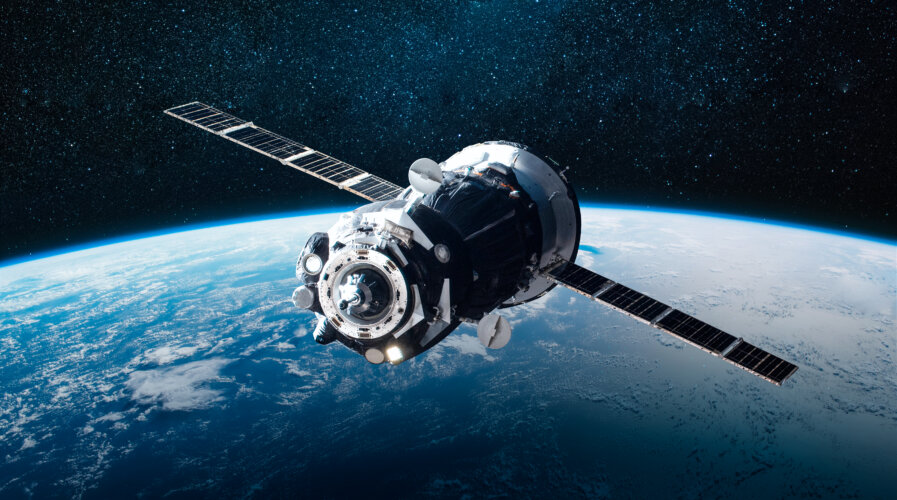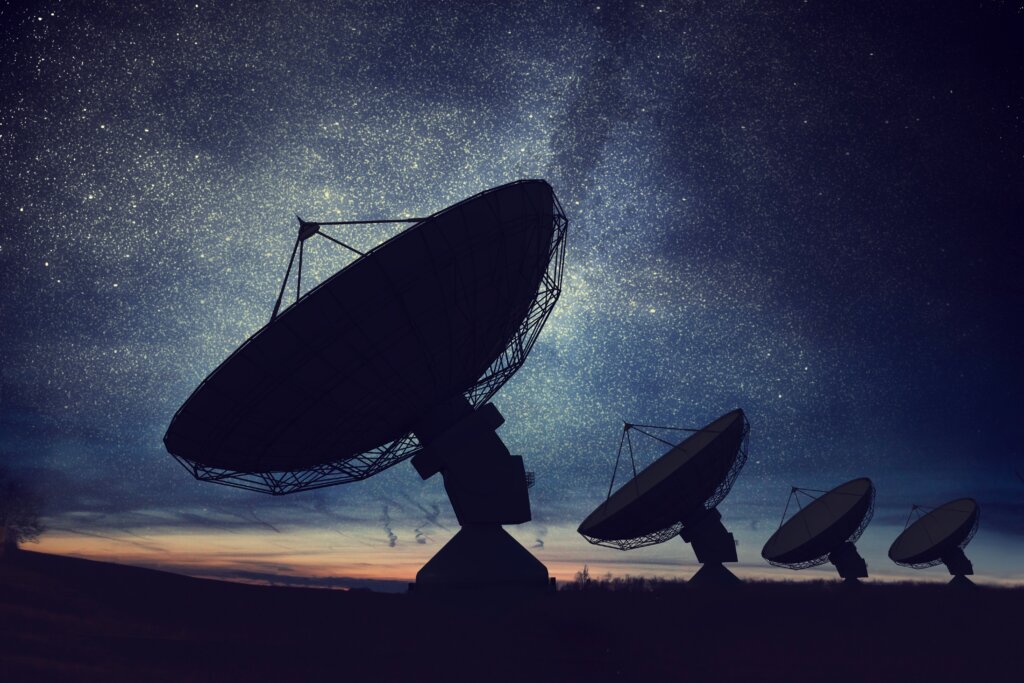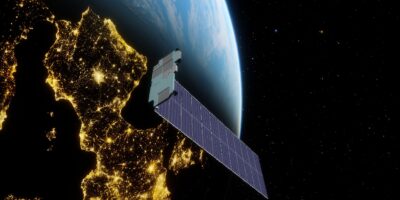
(Source – Shutterstock)
How satellites are becoming a game changer for cloud service providers
|
Getting your Trinity Audio player ready... |
Over the last few years, the number of satellites providing not just network and communication services but also services for enterprises from space has been increasing. Thanks to more cost-effective launches using reusable rockets, more companies are also venturing into the satellite industry, especially for low-earth orbit satellites (LEO).
According to the Index of Objects Launched into Outer Space by the United Nations Office for Outer Space Affairs (UNOOSA), about 8,261 individual satellites are orbiting the earth as of April 2022. There are also now 31 different launch facilities listed by UNOOSA, including air-based, sea-based, and even submarine-based launches.
The most common satellites in space are now LEO satellites. While the number of LEO satellites has been increasing, their connectivity can also be limited and congested as they try to cope with increasing demand. For example, Starlink users suffered slow network speeds earlier this year when the network got congested in some areas. Starlink has since launched more LEO satellites to meet the demand of its customers.
However, having too many satellites in space has also raised concerns about space junk, especially after these satellites are no longer needed. On the other hand, medium Earth (MEO) orbit satellites are starting to be a better option for most organizations looking to leverage space technology not only for network connectivity but for other enterprise use cases as well.
Cloud service providers (CSPs), for example, are utilizing MEO satellites to improve data transfer, especially between physically challenging locations. For example, some CSPs are using satellites to transfer data to and from aircraft and cruise ships. Meanwhile, telco companies are also using MEO satellites to provide network coverage to locations that do not support physical infrastructures.
The benefits of MEO satellites for CSPs include:
- improved network connectivity
- enhanced backup and disaster recovery
- increased data security
- global coverage
- reduced latency
One satellite company that is enabling this is SES. SES operates the world’s first multi-orbit communications satellite network, combining geostationary orbit satellites’ wide coverage and reliability, and a medium Earth orbit satellite constellation’s low latency and high data throughput. The MEO satellite company is in the process of launching its O3b mPOWER satellite constellation, which is expected to be a game-changer for Earth-space communications, especially in meeting CSP requirements.
To understand more about how SES is improving network connectivity for CSPs, Tech Wire Asia caught up with Sergy Mummert, SVP, Sales Global Cloud & Strategic Partnerships, SES.
Can you share the role satellites play in enabling cloud service providers to meet demands?

Sergy Mummert, SVP, Sales Global Cloud & Strategic Partnerships, SES
As a global content and connectivity provider operating for more than 35 years, our role is to use the superpower of satellites to provide enterprises and governments with performant, secure, and reliable communications networks deployed across underserved and remote parts of the world.
Over the last decade, with the proliferation of smart devices and cloud-based applications, our customers have been steadily increasing their demand for high-speed connectivity to optimize their business operations and keep their people connected whether on land, in the skies, or out at sea. No longer are they only seeking low latency and high throughput satellite connectivity; they also want the satellite-based networks to seamlessly extend or resilient their existing terrestrial networks.
SES satellites have been designed in such a way that they can seamlessly expand the 5G network edge and can be a key part of a telco’s 5G network planning. A good case in point showing how 5G has a significant impact on helping our customers on the ground is our partnership with Microsoft in Taiwan; we provided an O3b MEO backhaul network to a quick-deploy private 5G setup for vehicles that would allow first responders to get connected and use their devices to communicate on this platform to the cloud.
For SES, how has it been partnering with players such as Microsoft and AWS to ready networks for a cloud-native era?
Every partnership is a journey. Since 2018, we have been working with public cloud players such as Microsoft and AWS. We were among the first partners of Microsoft and AWS collaborating on their new space programs – as well as Oracle and IBM to work in tandem to offer private connections to ships, planes, new communities, and remote areas.
As we brought them into how we operate – whether it’s automating our services or developing more virtualized software-defined systems – they began taking an interest in us as customers and users and wanted to expand the partnership.
We started working together and would step in to work with some of their customers who needed the reach of a satellite network to effectively use their cloud-based applications. In turn, they could reach out to our communities with their services and begin working with them. This allowed us to look at enabling solutions between satellite communications and the cloud using their cloud capabilities at an early stage when cloud providers took a close interest in the space industry in return.
What are the network challenges faced by CSPs in the Asia Pacific with the increased cloudification of enterprises?
CSPs in Asia Pacific are faced with the same challenges as anywhere else across the world where there is a need to connect remote areas. That said, the uniqueness of the region lies in the vast territories of certain countries. Take Indonesia, for example, it’s economically unviable for governments to deploy terrestrial networks everywhere.
Being the largest continent on earth, the different regions of Asia have vastly varying climates and topographies, resulting in many different kinds of natural disasters. Existing networks can be easily disrupted, so an additional layer of resiliency is needed.
Satellites have an eminent role to play here in reaching areas previously hard to connect and connecting enterprises, public sector locations, and local communities to the Cloud. With digital inclusion as a high priority in the region, satellite solutions like SES’s next-gen MEO constellation O3b mPOWER and the connectivity it offers are set to thrive, with its improved connectivity through high-bandwidth, low-latency capabilities to drive differentiation and resiliency.
While 5G is also expected to lower latency and improve cloud connectivity, how satellite solutions can bolster CSPs’ network connectivity?
Satellite solutions are capable of bolstering Cloud network connectivity and boosting 5G acceleration beyond urban areas with a highly performant and steadfast network. While densified urban areas will be the first to receive 5G upgrades due to available network infrastructures, small cities, rural towns, and remote locations will also access it.
As end-users become more accustomed to the qualities of 5G, they’ll increasingly expect that same experience everywhere their devices can go – in suburban neighborhoods, small towns, and while traveling by plane, cruise ship, or long stretches of highways. As CSPs look to expand their market beyond urban areas into regions like APAC where the digital divide remains strong, they are expanding their connectivity ecosystems to include satellite operators.
With satellites that operate in Medium Earth orbit (MEO) – like SES’s O3b and O3b mPOWER – the combination of low latency, high throughput, and global coverage will enable network providers to provide services virtually anywhere, anytime. Specifically, O3b mPOWER services will enable our cloud customers’ most critical operations and revenue streams with high throughput, predictable low latency, and high availability, all backed by robust service level agreements.

(Source – Shutterstock)
Is there a synergistic interplay between satellite network systems and submarine telecom cables?
Without a doubt. For years, they have been perceived as competitors. However, it’s increasingly understood that these two technologies can interplay. When natural disasters strike or submarine cables are cut, communication networks can be disrupted, and satellites have been counted on to rapidly restore critical communication networks.
Whether it’s relief workers or local populations needing connectivity solutions, satellite operators can work with local network operators to ensure connectivity is available and reliable, providing the affected with a link to the outside world. Another example of synergy is during the lapse of the deployment of fiber cable, usually lengthy to execute. The quick deployment capability of our second-generation Medium Earth orbit O3b mPOWER system is a way for even fiber to implement the local digital network using satellite.
Lastly, is using satellite solutions for the cloud a costly affair?
When discussing the cost of satellite connectivity with CSPs, it is important to shift the perception that high throughput connectivity only means fiber connectivity and highlight the benefits of a wireless connectivity solution compared to a fixed dedicated service like fiber. When you look at fiber deployment in a remote area, the cost quickly becomes high due to the volume of equipment required to ensure coverage.
Connectivity via a satellite system is, on the contrary, more affordable in terms of serving communities that are out of reach – this also applies to planes and ships. Satellite connectivity has this unique capability because of the flexibility and scale the system offers. Satellite terminals provide the ability to modulate their bandwidth capacity according to the needs and charge users only when needed, unlike fiber whose cost remains the same regardless of the actual use of the bandwidth.
READ MORE
- Safer Automation: How Sophic and Firmus Succeeded in Malaysia with MDEC’s Support
- Privilege granted, not gained: Intelligent authorization for enhanced infrastructure productivity
- Low-Code produces the Proof-of-Possibilities
- New Wearables Enable Staff to Work Faster and Safer
- Experts weigh in on Oracle’s departure from adland


